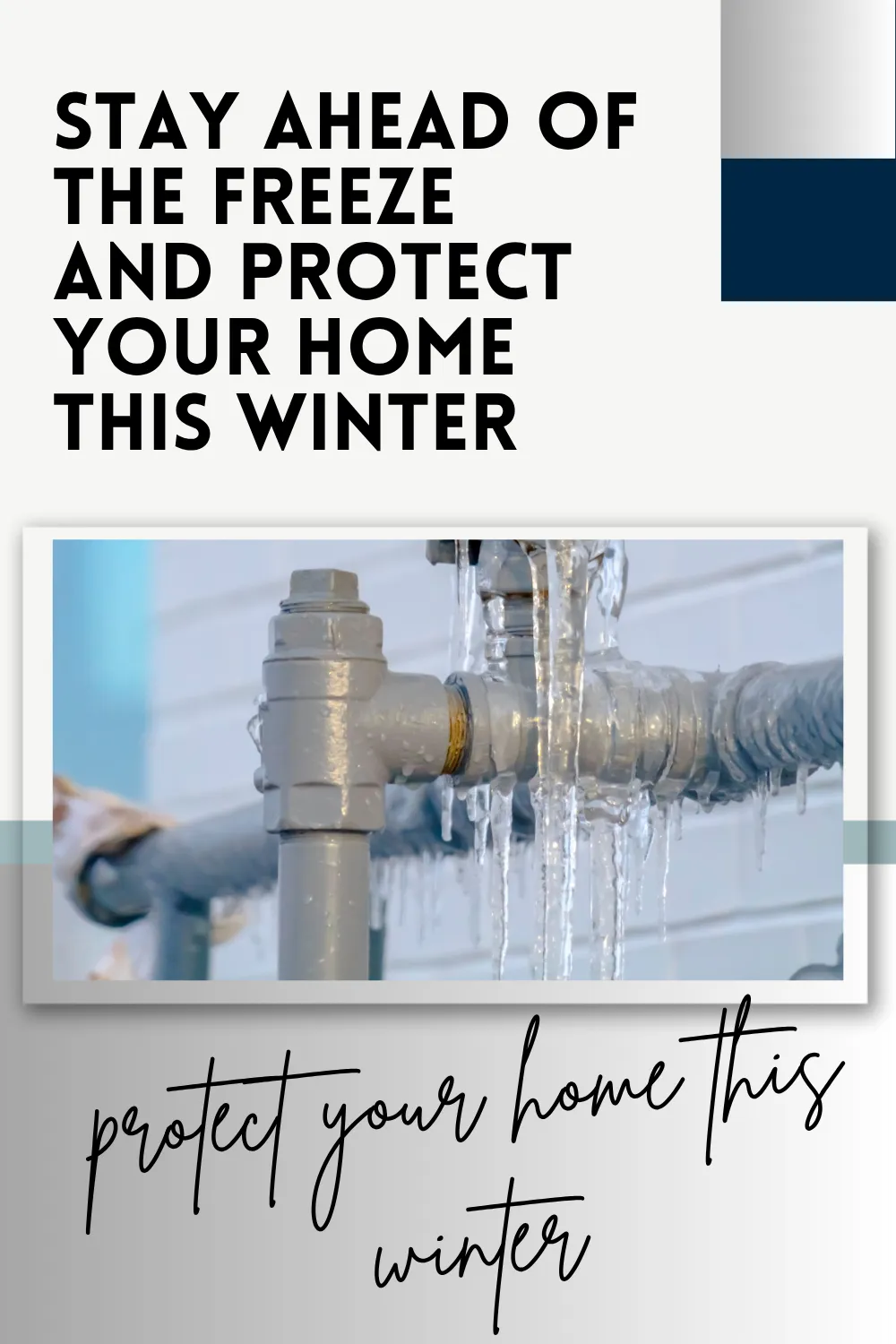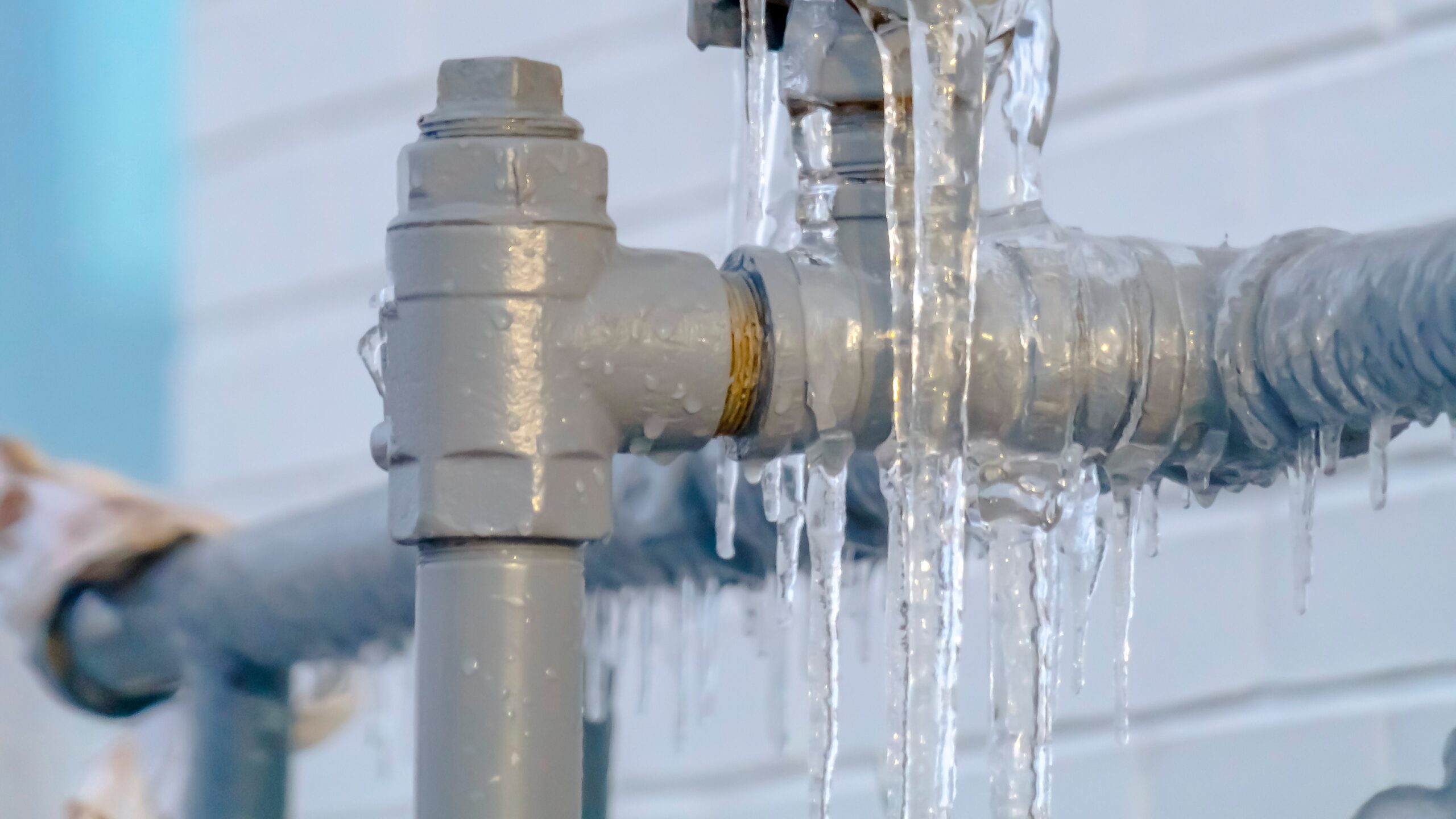
Easy Winter Plumbing Tips to Prevent Frozen Pipes
"A few simple steps today can save your plumbing tomorrow—easy winter plumbing tips are the key to preventing frozen pipes and costly repairs." - Appliance Boss
Introduction
Winter can be magical—but not when you’re dealing with a burst pipe. As temperatures plummet, your plumbing system becomes vulnerable to freezing, cracking, and costly water damage. A little planning goes a long way. These winter plumbing tips are designed to help you avoid the stress, mess, and financial headache of frozen pipes.
Why Frozen Pipes Are a Winter Homeowner’s Worst Nightmare
Frozen pipes don’t just stop water flow—they expand, crack, and often burst, leading to extensive water damage and expensive repairs. It's not just the pipe repair that costs you; it’s the potential damage to drywall, flooring, and furniture. One burst pipe can flood your peace of mind—and your living room.
The Cost and Chaos of Ignoring Frozen Pipe Risks
Failing to prepare your pipes for winter can result in repairs that easily exceed $5,000, not including structural or mold remediation. Water leaks can damage electrical systems, compromise insulation, and require full renovations. The emotional toll of returning home to a soaked interior is one no homeowner wants to experience.

Understanding How Pipes Freeze
What Causes Pipes to Freeze in Cold Weather
When outdoor temperatures drop below 32°F (0°C), water inside exposed or unprotected pipes can begin to freeze. As it solidifies, water expands, putting immense pressure on the pipe walls—regardless of whether they're plastic or metal.
Why Certain Pipes Are More Vulnerable Than Others
Pipes that run through unheated areas—like attics, basements, garages, or exterior walls—are most likely to freeze. They’re often overlooked because they're hidden or out of daily use. Older homes with minimal insulation face the highest risk.
The Science Behind Pipe Bursts and Water Expansion
Water expands roughly 9% in volume when it freezes. This increase creates intense pressure between the blockage and the closed faucet. With nowhere to go, that pressure eventually causes the pipe to rupture, often at its weakest point.
Know Your Home’s Plumbing Weak Spots
Which Areas Are Most at Risk for Frozen Pipes
Garages, crawl spaces, attics, and outdoor plumbing fixtures top the list. Pipes along exterior walls and beneath kitchen or bathroom sinks are common culprits.
Signs That Your Pipes May Already Be Freezing
Reduced water pressure, frost on exposed pipes, strange gurgling noises, or a faucet that won’t flow are red flags that your pipes are approaching freezing—or already frozen.
Essential Winter Plumbing Preparation Tips
How to Winterize Your Plumbing System Before the Freeze
Start by turning off outdoor water valves, draining hoses, and insulating all exposed pipes. Check for pipe vulnerabilities throughout the house, especially in unheated areas.
Checking and Sealing Drafty Areas Around Pipes
Use caulk or spray foam to seal cracks and holes in exterior walls near piping. Even small drafts can drop temperatures drastically around plumbing.
Insulation Is Key
Best Types of Pipe Insulation for Winter Protection
Foam pipe sleeves, fiberglass wraps, and self-sealing rubber insulation all work well. For extreme conditions, consider heat tape or thermostatically controlled heating cables.
How to Install Pipe Insulation Like a Pro
Cut insulation to length and wrap tightly around pipes, sealing joints with waterproof tape. For heat cables, follow manufacturer instructions carefully to avoid overheating.
Protect Outdoor Plumbing Fixtures
Shutting Down and Draining Outdoor Faucets and Hoses
Disconnect hoses, shut off the valve inside the home, and drain the remaining water from outdoor faucets. Leaving water in the line invites ice—and disaster.
Covering and Securing Hose Bibs Before the Freeze
Install insulated faucet covers or wrap spigots with cloth and plastic. Secure the covering with weatherproof tape to prevent exposure.
Keep the Water Flowing
Why Dripping Faucets Can Prevent Frozen Pipes
Allowing a slow drip keeps water moving, which makes it less likely to freeze. It also relieves pressure if freezing does occur, reducing the chance of a burst.
Which Faucets to Leave Running and When
Let faucets furthest from your main line drip slightly, especially those connected to vulnerable pipes. This includes kitchen sinks on exterior walls and garage taps.
Monitor the Temperature
Setting Your Thermostat to Protect Your Pipes
Keep your thermostat at a consistent temperature—no lower than 55°F—even when away. Avoid big drops at night to prevent plumbing stress.
Smart Thermostats and Sensors That Help Prevent Freezing
Smart home devices can alert you to sudden temperature drops or water leaks. Leak detectors placed near pipes offer peace of mind all winter long.
Don’t Forget the Garage and Crawl Spaces
How Cold Air Creeps into Uninsulated Areas
Gaps under doors, unsealed vents, and poorly insulated walls let frigid air seep in. These unnoticed areas can lower the ambient temperature enough to freeze pipes.
Tips for Keeping These Spaces Warm and Safe
Seal garage doors, use foam insulation boards, and consider space heaters for unheated zones—especially during a deep freeze.
Let Warm Air Circulate
The Importance of Opening Cabinet Doors in Cold Weather
Open doors under sinks to allow warm indoor air to surround the plumbing. This simple step can prevent freezing in pipes close to outer walls.
How Air Circulation Helps Protect Hidden Pipes
Even airflow reduces temperature gradients in a room. Avoid letting cold zones develop by encouraging circulation through ceiling fans or HVAC adjustments.
What to Do During a Hard Freeze Warning
Emergency Actions to Protect Pipes During an Arctic Blast
Crank up the thermostat slightly, let multiple faucets drip, and add temporary insulation (like towels or foam) around exposed pipes.
Checklist for Last-Minute Pipe Protection
Open cabinets
Turn on faucet drips
Close garage doors
Use space heaters wisely
Check attic and crawl space temps
Prevent Frozen Pipes When You're Away
How to Safeguard Your Home While on Winter Vacation
Have someone check your home regularly, or install remote water shut-off valves and leak alerts. Never turn your heat off completely when away.
Using Timers, Smart Home Devices, and Neighbors to Help
Smart plugs, motion-sensor heaters, and temperature monitoring systems allow you to monitor conditions and make adjustments from afar.
What to Do If a Pipe Freezes
Safe Ways to Thaw Frozen Pipes Without Causing Damage
Use a hairdryer, space heater, or warm towels—never an open flame. Begin thawing from the faucet end and move slowly toward the blockage.
Warning Signs of a Potential Burst
Bulging pipes, water stains, and persistent freezing in the same location signal a crack may be forming. Turn off your water supply immediately if you suspect a burst.
When a Pipe Bursts—Act Fast
Steps to Minimize Damage Before Help Arrives
Shut off the main water valve, turn off electricity to affected areas, and start soaking up excess water. Move furniture and valuables to higher ground.
How to Shut Off Water and Contact a Professional Immediately
Locate your main shut-off valve (usually near the street or basement wall). Call an emergency plumber and document damage for insurance purposes.
Calling in the Pros
When to Contact a Licensed Plumber for Winter Protection
If you're unsure how to insulate your pipes or suspect a leak, call a professional before the freeze sets in. Prevention is more affordable than repair.
Benefits of a Pre-Winter Plumbing Inspection
Licensed plumbers can identify hidden vulnerabilities and recommend proactive solutions—giving you confidence when the cold arrives.
Long-Term Prevention Strategies
Upgrading Plumbing for Cold Weather Resilience
Consider rerouting exposed pipes, installing pressure-reducing valves, or enclosing plumbing in insulated walls.
Investing in Freeze-Proof Fixtures and PEX Piping
PEX piping is flexible, resistant to bursting, and ideal for colder climates. Many modern fixtures also include built-in freeze protection.
Eco-Friendly Winter Plumbing Tips
How to Conserve Water and Energy While Staying Safe
Use low-flow fixtures, insulate hot water lines, and only drip the necessary faucets. Combine safety with sustainability.
Balancing Winter Safety with Sustainability
Energy-efficient heating systems and insulated plumbing work together to reduce your carbon footprint while preventing damage.
Educating the Whole Household
Teaching Kids and Family Members Winter Plumbing Basics
Make sure everyone knows how to shut off the water, spot a frozen pipe, and who to call in an emergency. Awareness is protection.
Why Awareness Is a Key Part of Prevention
A prepared household can act quickly in a freeze, minimizing both panic and property damage. Empower every family member with knowledge.
Conclusion
Frozen pipes don’t have to be part of your winter story. With just a little preparation and awareness, you can keep your plumbing flowing smoothly — no matter how low the temperatures drop. From insulating pipes to monitoring the thermostat, these easy winter plumbing tips to prevent frozen pipes are your best defense against costly repairs and home damage.
If you ever need help, Zip Does Plumbing is just a call or click away. We’re here to help homeowners stay warm, safe, and leak-free all winter long.
Website: www.zipdoesplumbing.com
Phone: (661) 370-2701
